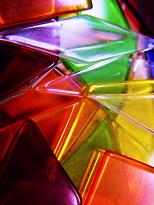Target Markets
Using Color Psychology to
Attract Your Target Markets
To develop a successful business, you need to identify your target markets, or the people or businesses you are aiming to sell
your products or services to; it is therefore important that you
identify and understand the colors that will attract your specific market.
With many businesses now being global, color has also become global. It is therefore important that you:
- Learn about the market you are trying to attract and speak the color language that they will best respond to.
- Then test your color choices on a small sample of your market before implementing a large and expensive promotion.
- Compare several color options, get feedback and then choose the colors which give you the best response.
Color psychology is not an exact science and there are no right or wrong colors, only colors which may get a better response than others from your target market.
Understand that there is a physiological and a
psychological component to each color as well as the subjective meanings
attached by each individual.
Our color preferences are 'colored' by our gender, our age, our
education, the culture we grew up in, preconceived color beliefs of the
societies we live in, our childhood associations with certain colors,
and our life experiences, whether those associations are negative or
positive.
The following are typical generalizations to help you understand your
target market, but remember, there are always exceptions to the rules!
Gender Based Color Preferences
Blue is a color which is generally favored by most people,
independent of which culture, country, age, socio-economic bracket, or
gender they are from, so it is the safest color to use in all your
target markets, although not always the best color to use.
Universally, pink tends to be favored by females.
Males:
- Prefer the color blue to red, and orange to yellow.
- Baby boys traditionally tend to be dressed in blue. In Belgium prior to the late 1970's, pink was used for baby boys - nowadays blue is more commonly used.
- In the western world many men are color blind so you need to be aware of the red/green visual problems if this is your target market and choose other colors that are not as affected.
Females:
- Prefer the color red to blue, and yellow to orange.
- Baby girls traditionally tend to be dressed in pink. In Belgium, prior to the late 1970's, blue was used for baby girls - nowadays it is more common to use pink.
- Tend to have a broader range of color preferences to men and are more open to trying new colors.
Both Genders:
- Blue, turquoise, green, red, yellow, black, white, gray and silver
are colors that are the most suitable for use in a business marketing to
both males and females.
- Pinks and purples are now becoming more acceptable to males, with pale pink business shirts and purple casual shirts commonly seen on men.
Age Based Color Preferences
Babies:
-
Cry more in a yellow room.
- Respond best to high contrast visuals.
Pre-adolescent Children:
- Prefer brighter primary and secondary colors - red, yellow, blue, orange, green and purple.
- Also prefer solid blocks of colors rather than patterns.
Adolescents/Teenagers:
- More open to experimenting with more sophisticated and complex
colors due to their exposure to computer graphics programs such as
Photoshop.
- More influenced by cultural influences due to multiculturalism and greater access to world markets through the Internet.
- Many younger teenager girls love varying shades of purple and pink.
- As they reach their late teens they often show a preference for black - this relates to a psychological need for black during the transition stage from the innocence of childhood to the sophistication of adulthood - it signifies the ending of one part of their life and the beginning of another, allowing them to hide from the world while they discover their own unique identity.
Young Adults:
- Similar to teenagers.
- Tastes begin to change around age 25 as they become more sure of themselves and find their direction in life.
Adults:
- Prefer more subdued colors.
- Are less open to experimenting with color, tending to stick with their favorites.
Mature 65+ Years Old:
- Yellow is the least favored color of this target market, unless it is a pale butter yellow.
- Preference for clear colors such as fresh blues, pinks, greens.
- Preference for cleaner colors such as blue-greens rather than olive greens.
- Are generally more comfortable with the calming colors of blue,
green, pink and purple, than the bright, stimulating colors of red,
orange and yellow, although some will choose muted blue based reds and
pale yellow.
- Many females often choose colors in the purple range, varying from deep purple and violet, to mauve and lavender, and plum colors, as they grow older.
Corporate Color Preferences
- The more serious the business, the darker the colors - dark blue, dark green, dark red, indigo, black, gray.
- The more casual and light-hearted the business, the brighter and lighter the colors - red, orange, yellow, bright green, bright blue, pink and purple.
Class Differences
- Working class and blue collar workers tend to prefer the bright and warm primary and secondary colors of the rainbow.
- Wealthier people tend to prefer the more complex and sophisticated colors - tertiary colors, and shades and tints of primary and secondary colors.
Education Based Color Preferences
- Research has shown that the more educated people are, the more sophisticated their color choices seem to be.
- Well educated people respond well to tertiary colors and those given unusual names.
- Less educated people tend to prefer the simpler basic primary and secondary colors.
- Broader education through the use of the Internet has resulted in greater access to worldwide influences and effects on color choices.
Climate Based Color Preferences
- People tend to prefer colors that duplicate the colors relating to their climate.
- People from warm tropical climates respond best to bright, warm
colors, while people from colder climates tend to prefer cooler and
more subdued colors.
- In the Scandinavian countries, fresh and bright blues, yellows and whites are popular.
- In Switzerland, more sophisticated colors such as dark reds and burgundies, gray and dark blue are common.
- In South America the warm reds, oranges, yellows and bright pinks are popular.
- Australian Aborigines respond well to the earthy reds, oranges, blues and greens that are seen in the outback regions of Australia.
To find out about the effect of colors in different cultures go to
To return to Business Color from Target Markets
To return to Home Page
Like to join our Facebook community?


New! Comments
Have your say about what you have just read! Leave me a comment in the box below.